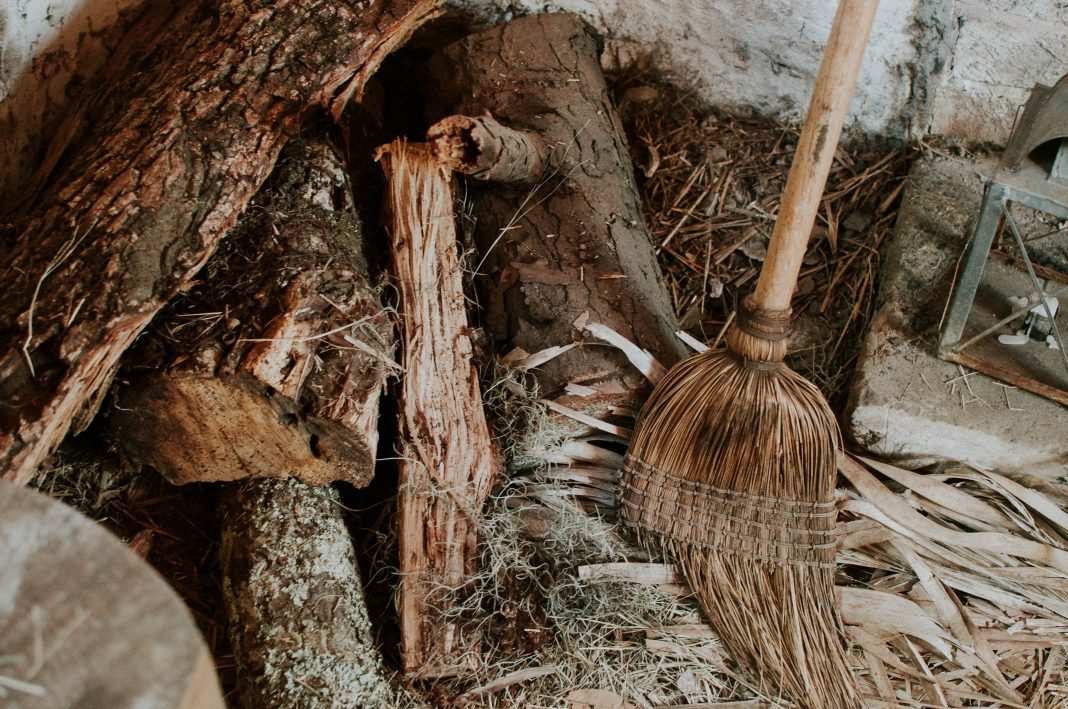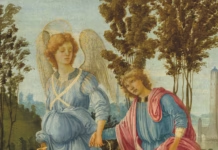Photo by Jessica Furtney on Unsplash
The humble broom is one of the oldest human inventions. The earliest brooms likely consisted of leafy branches or bundles of twigs, held in the hand. The materials used in brooms would necessarily have depended on what was available to the individual broom maker, from twigs and husks to grasses and feathers. Eventually, someone thought to add a handle to their sweeping bundle, and the broom as we know it began to take shape.
By the Middle Ages, the most common form of broom in use in western Europe was the twig besom. Despite being introduced to Italy from Syria in the 15th century, broomcorn (Sorghum vulgare) would not become a common broom material until the early 19th century in America. In the modern broom-making community, besom typically refers to a broom with a long handle and a round brush, sewn or unsewn, and made with any of several materials, including twigs, broomcorn, and broom sedge, while the general term broom is the default for one that has been clamped and sewn flat for the purpose of efficient sweeping.
Brooms and besoms have been associated with witches for centuries, and not just as a favored mode of transportation. In Ireland, in 1324, a wealthy widow named Alice Kyteler was accused of witchcraft. One of the many accusations against her was that she had been spotted sweeping her neighbors’ doorsteps in an attempt to sweep their good fortune away from their houses and into her own. The first known depiction of witches flying on besoms can be found in the margins of the illuminated manuscript of the poem “Le Champion des Dames,” written in 1451 by Martin le Franc. A caption above the heads of the flying women identifies them as “vaudoises,” or Waldensians, members of a breakaway Christian sect that was declared heretical by the Holy Roman Church in the early 13th century.
Surprisingly, the first person known to confess to flying on a besom was a man! Guillaume Edelin was an Augustinian priest and the prior of Saint-Germain-en-Laye when he was arrested and charged with witchcraft, after publicly scoffing at the Church’s warnings that witches were running amok in the countryside, making pacts with the devil, and flitting about on broomsticks. He was charged with an assortment of diabolical crimes, including making a pact with the devil and flitting about on a broomstick! A confession to these “crimes” was tortured out of him, after which he repented—but was still imprisoned for the rest of his life.
Though a lowly household implement, the broom took on such glamour that it became the object of myriad superstitions, many of which are alive and well today. A small sampling:
• It is considered unlucky to sweep dust out of a door after nightfall.
• Never sweep on New Year’s Day, or you’ll sweep away all your luck for the coming year.
• If a visitor is overstaying his welcome, stand a broom up behind the door of the room in which he’s being entertained. He will soon grow uncomfortable and leave.
• To prevent the return of an undesirable overnight guest,
sweep the room he or she slept in as soon as possible after their departure.
• Stand a broom beside the front door to bar the entrance of negativity.
• If one sweeps under the feet of an unmarried person, he or she will never marry.
• If an unmarried woman steps over a broom that is lying on the floor, she will become a mother before she becomes a wife.
• If someone sweeps over your feet, you are in danger of going to jail unless you immediately spit on the brush of the broom.
• To bring rain within three days, dip a broom into a bucket of water into which dried fern has been crumbled and then hold the broom aloft, shaking the water out to simulate rainfall.
With this long and storied history, our humble brooms and besoms may not be so humble after all!





































